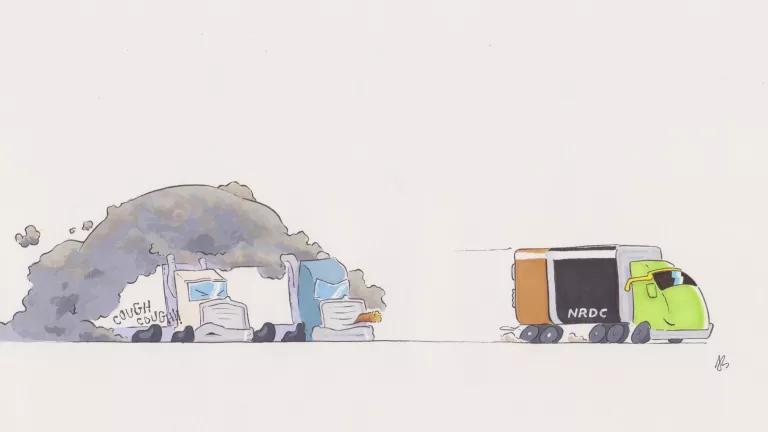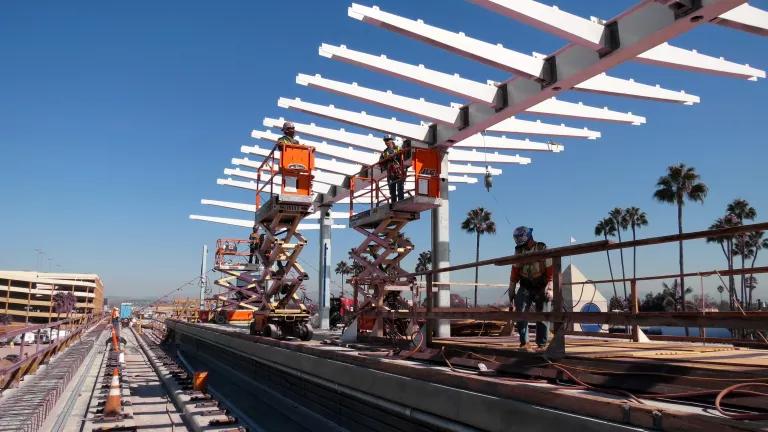
California has ambitious goals and regulations for electrifying the transportation sector, and electric vehicle (EV) charging done at a scale necessary to meet these goals will have significant implications for the electrical grid. Done right, widespread EV adoption can support the operation of the grid and put downward pressure on electric rates to the benefit of all utility customers. But doing it right and ensuring that we make timely and strategic grid upgrades when and where necessary requires better information to help utilities plan for the grid we need. Fortunately, the Governor Newsom just signed a bill that will help prepare the electrical grid for all the new electric cars, trucks, and buses we need to meet state climate, air quality, and equity goals, and avoid infrastructure bottlenecks that could otherwise inhibit EV adoption.
Assembly Bill (AB) 2700, authored by Assemblymember Kevin McCarty, will enable more-strategic grid planning and investment to ensure we have the grid we need to accommodate widespread transportation electrification when we need it to meet the state’s goals. This is especially important for supporting the electrification of medium and heavy-duty vehicles, which will provide much-needed pollution relief to low-income communities and communities of color that often live near freeways, ports, railyards, and other facilities that generate significant levels of engine exhaust.
Supported by a broad coalition of environmental, equity, labor, fleet, utility, and EV charging organizations, AB 2700 directs utilities to conduct strategic grid planning and investment to ensure the grid is proactively prepared to accommodate all the new electric cars and trucks coming over the next decade thanks to state goals and regulations like the Advanced Clean Cars, Advanced Clean Trucks, and Advanced Clean Fleets rules. It requires fleet data already collected by state agencies to be shared with California utilities, so that they can use that data in their existing grid planning processes to better anticipate electricity demand and propose necessary upgrades.
Build It Once, Build It Right
AB 2700 addresses a critical barrier for EV charging infrastructure deployment that could otherwise act as a bottleneck to future EV adoption. Right now, electric trucks can be delivered quickly (as fast as 3 weeks) but charging infrastructure and connecting to the grid can take up to several years when substations and similar grid infrastructure are needed. Utilities need to be able to start planning and building major grid upgrades several years in advance of the expected EV load, especially for areas with high concentrations of medium and heavy-duty vehicles like fleet depots, warehouses, ports, and goods movement corridors.
Under the existing regulatory framework, however, California’s utilities cannot plan for grid hardening necessary to accommodate the future electric vehicle charging anticipated by the state’s goals and regulations. Instead, the current “just-in-time” approach for building grid upgrades when customers with large electrification loads come to the utility for help results in delays, barriers, and larger costs that will ultimately make it difficult to realize the goals set by California’s executive orders and regulations.
AB 2700 fixes this by enabling a more-proactive approach to grid planning and serving these customers, avoiding costly upgrades done on an emergency basis. With more-strategic planning and investment, AB 2700 will help ensure the electrification of the transportation sector is cost-effective, facilitates progress towards the state’s goals, and maximizes benefits for all utility customers.



